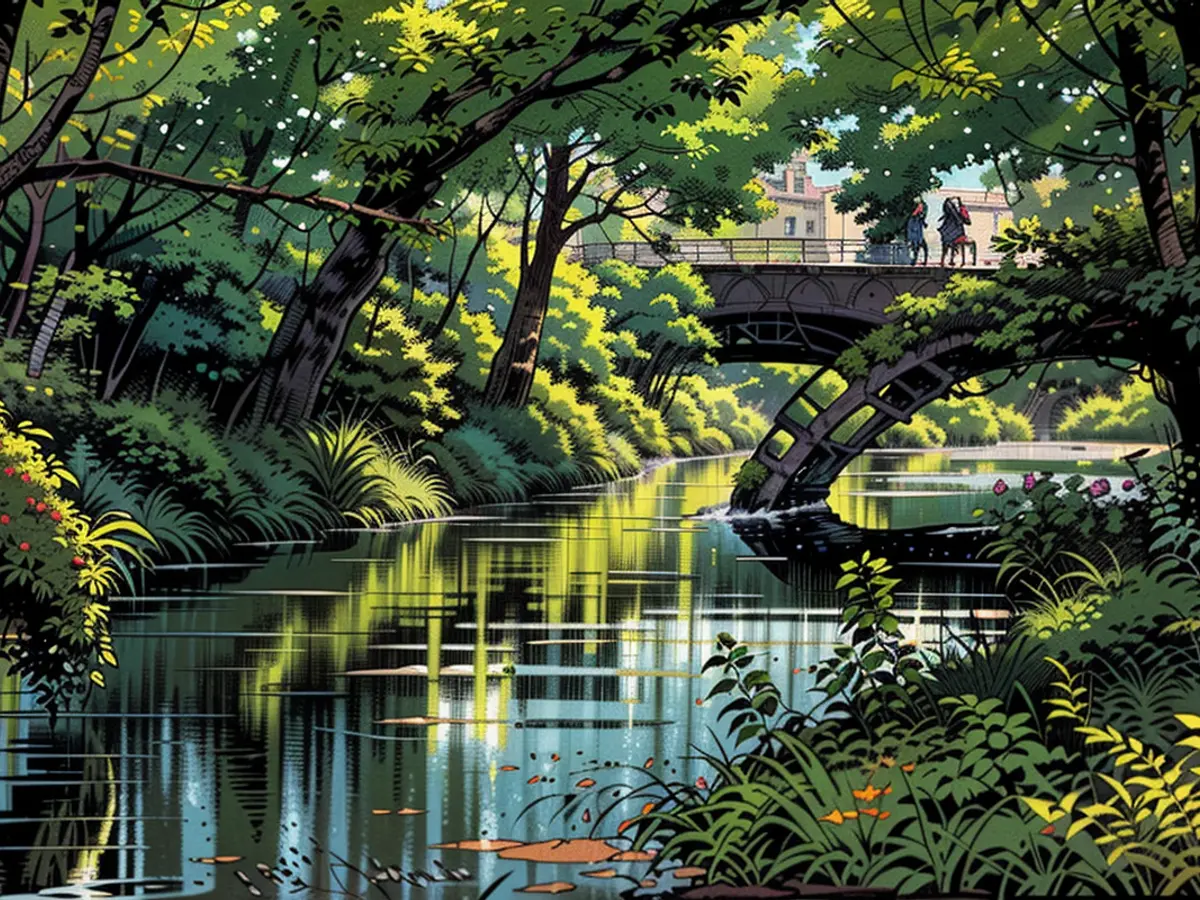Wildlife in the city - Evidence taking for the return of otters in Berlin
A small brown pile under a bridge provides evidence: Here, an Otter has marked its territory. A narrow path that winds through the thicket along the edge of the Wuhle river is also likely the work of an Otter.
"We can expect to find Otters at every flowing body of water in Berlin," says Marco Philippi of the German Environmental Aid (DUH), during a walk along the Wuhle. Otters have also left their traces at the Spree and Havel.
Philippi leads the DUH project "Habitat Initiative for the Otter," which is funded by the Foundation for Nature Conservation. The goal is to learn more about the animal and its habitat, identify risks, and protect it - as the native European Otter is making a comeback in Berlin. "Otter sightings have increased," says city nature ranger Kristina Roth. For about three years, there have been more reports in urban areas.
Otters are nocturnal
Not only the small pile of feces under the bridge is proof. On night cameras set up by experts, the shy animals are regularly seen. In some territories, there are reportedly otters in the images almost every day. In Germany, the Otter is considered endangered and strictly protected. Otters are nocturnal and therefore difficult to detect. Therefore, it is not entirely clear whether one simply hadn't looked closely enough before, Roth explains.
It is difficult for experts to say exactly how many animals live in Berlin. Genetic studies have not yet been conducted, and the animals cannot be easily distinguished from one another on the cameras. However, the experts had not expected the animals to settle in the metropolis. "In Berlin, we have extensive waterfront fortifications, which are partly impassable for Otters," says Philippi. Otters hunt in the water but live and sleep on land, so unbuilt waterfronts with bushes and shrubs for sleeping and hiding places are essential for the animals. Conditions like those along the Wuhle, where the bank is partly overgrown, are rare. "There are few suitable retreat areas," says Philippi.
Living spaces in Brandenburg occupied
Despite this, the animals seem to have adapted to city life. Experts attribute this to the fact that they have no other choice. "Brandenburg is completely settled. All good suitable habitats are occupied," explains Philippi. Otters are solitary animals that live in fixed territories, and young otters are forced to find new territories - for example, in Berlin, although it is not really an "Utopia" for Otters, says the expert.
The life in the city is dangerous for the animals. "Traffic is the most common cause of death for the Otter," the experts have found. Otters do not swim under certain bridges but go ashore and cross the street. This is especially the case with low bridges that do not have narrow land strips next to them. Why exactly, Roth and Philippi do not know, but they have observed that the animals mark their territory on these strips frequently.
Philippi recommends restoring and installing small swimming platforms for Otters under bridges and planting more waterfronts and protected waterfront areas and nature reserves that are respected by humans. "We should design our urban living spaces so that all can live there. Not just humans," says Roth.
- Despite the scarce suitable retreat areas in Berlin, Otters have managed to establish a comeback in the city.
- Marco Philippi, from German Environmental Aid (DUH), led a project called "Habitat Initiative for the Otter," aiming to protect the native European Otter.
- Kristina Roth, a city nature ranger, reported a significant increase in Otter sightings in urban areas over the past three years.
- The German Otter is considered endangered and strictly protected, making it difficult for experts to determine its population in Berlin through genetic studies.
- Otters in Berlin have adapted to city life due to a lack of suitable habitats in Brandenburg, where all good areas have already been occupied.
- The experts found traffic as the most common cause of death for Otters in Berlin, especially at low bridges without narrow land strips next to them.
- Philippi suggested installing small swimming platforms for Otters under bridges, planting more waterfronts, and creating protected nature reserves to ensure a harmonious coexistence of urban wildlife and humans.








